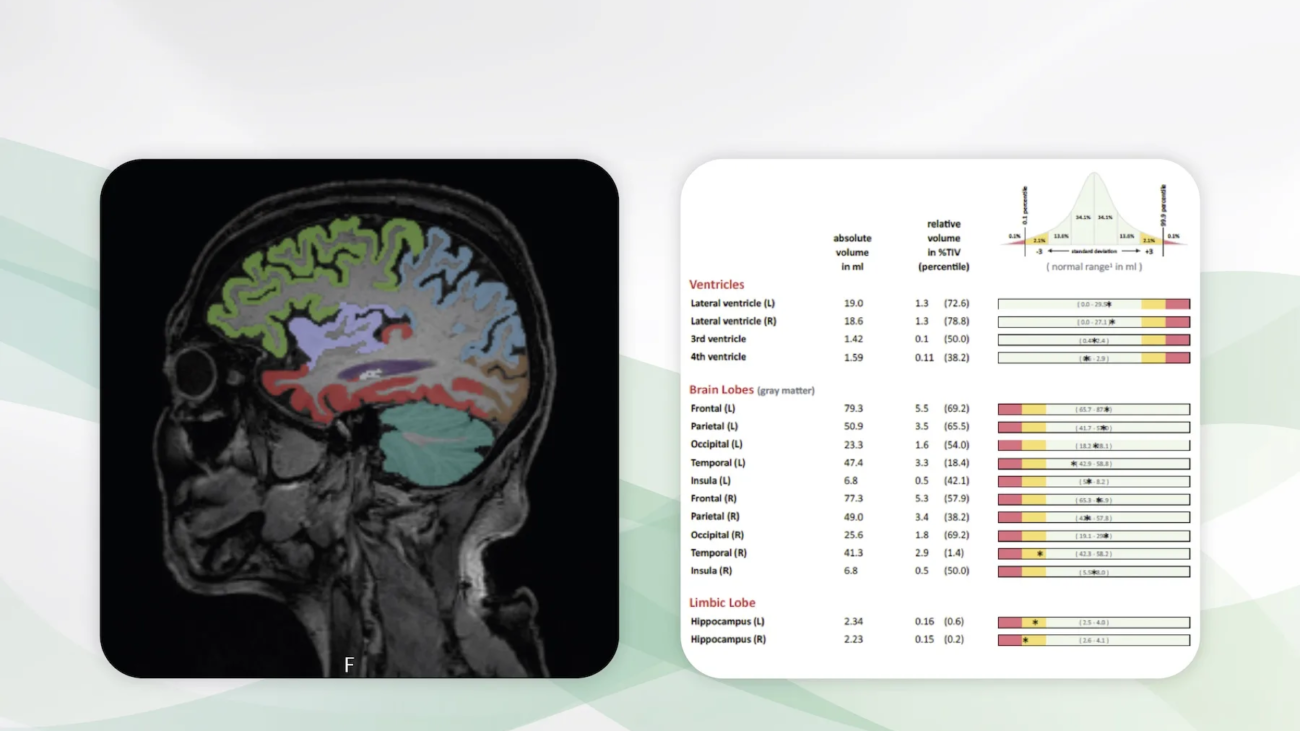3D T1-weighted gradient-echo MRI of a 68 years old patient with mild symptoms of cognitive impairment. Routine MRI (not shown) revealed mild microangiopathic neurodegeneration. Brain volumetry was performed (left). AIRAscore identified a volume reduction of the right temporal lobe and bilateral hippocampal that exceeds age (right), suggestive for Alzheimer´s disease. Diagnosis was confirmed by cerebrospinal fluid analysis showing pathological beta amyloid ratio and elevated tau and phosphor-tau proteins.
For many people it remains unrecognized that even minor symptoms can indicate the development of dementia. They thus miss the important early diagnosis and the timely start of their individualized therapy and thus the best possible prognosis for many years. AI, together with brain MRI, can contribute to the earliest possible detection and treatment of neurodegenerative diseases.
It is with great pleasure that we present AIRAscore, an AI assistant for the precise diagnosis of neurodegenerative diseases.
What AIRAscore is and how it works
AIRAscore measures relevant biomarkers for the diagnosis and differential diagnosis of neurodegenerative diseases from MR images of the brain.
Global and regional brain volumes are accurately measured. The results are always compared with age- and gender-specific reference values. The measurements are many times more accurate than even specialists have been able to carry out in the past. Results that deviate from normal are clearly evident. The findings are reported in tabular form in bar graphs and support the knowledge transfer from radiologists to patients and physicians.
Who benefits
Patients, clinicians and radiologists through the early detection and differential diagnosis of neurodegenerative diseases. AIRAscore is also ideal for monitoring the progress of diagnoses made.
Our own experience at Radailogy
We have tested AIRAscore intensively and worked out many technological criteria with the manufacturer for optimal use with Radailogy.
We found a high correlation in the detection of macro- and microangiopathic changes and brain atrophy between our specialists and AIRAscore. In addition, AIRAscore was superior to the human observer in the precision of subtle regional findings in almost all tests. The AI assistant provides accurate volumes of all relevant anatomical structures of the cerebrum, cerebellum and brainstem. Early diagnosis was possible, especially for Alzheimer’s patients, and the correlation with clinical and laboratory data was also very high in the follow-up. AIRAscore can also be used for the differential diagnosis of multiple sclerosis and Parkinson’s disease.
The scientific environment
AIRAscore was developed in neuroscientific medical research. From our point of view, the AI assistant represents a bridge between innovative university research and direct applicability in everyday clinical practice.
Data to upload to Radailogy
1.5-3.0 Tesla MRI, native 3D T1-weighted gradient-echo sequences, slice thickness 1 mm, echo time ≤ 5 ms, flip angle ≤ 15°


